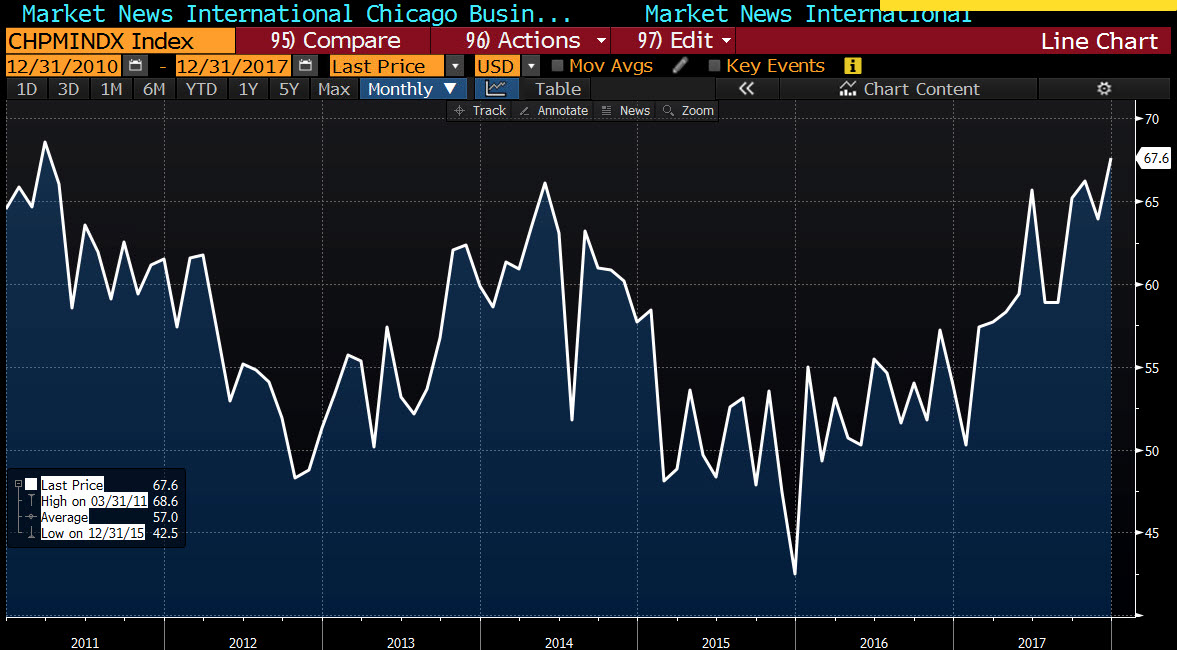Highest since March 2011
The Chicago purchasing managers index for December came in at 67.6 versus 62.0 estimate. That is higher than the 63.9 last month.

- The index is the highest since March 2011.
- The three-month rolling average is 65.9. So above that bogey (bullish).
- The six-month rolling average is 63.5.
- Four components rose this month vs 5 from last month.
- Both output and demand showed strong gains in December, with each rising to multi-year highs.
- The Production indicator rose to a level last seen higher 34 years ago, while the
- New Orders Indicator hit a three-and-a-half year high.
- As for the other three indicators that comprise the Barometer, Order Backlogs also grew, but Employment and Supplier Deliveries fell on the month.
- Firms' unfulfilled orders edged slightly higher in December, but remained below the levels recorded in October, when businesses grappled with the worst of the recent, challenging weather conditions.
- Supplier delivery times shortened in December. The associated indicator fell to the lowest level since April but remained comfortably above the 50-neutral mark.
- Companies increased quantities of stock at hand. After hitting an eight-month high in November, the Inventories indicator rose to fresh 3-year high in December. There was evidence of firms carrying a larger level of stock to support stretched lead times and in preparation for product launches scheduled for the New Year.
- Despite decreasing in December, the Employment indicator remained in expansionary territory. On a 12-month average basis, 2017 was the best year the indicator has had since 2014, slipping below the 50 on only four occasions.
This month's special question asked firms to predict how both their businesses and the US economy would fare in the upcoming new year.
- Just over 50% saw their company growing somewhere between 0-5%,
- 37% forecasting growth between 5-10%
- 12% expecting growth above 10%.
- Regarding the bigger picture, 61% of firms thought the US economy would grow somewhere in the region of 2 to 5% over 2018,
- 29% put growth at between 0 and 2%.
- Just under 6% of businesses saw the US economy contracting in 2018 while the remaining 4% saw economic growth running above 5%.
Inflationary pressures at the factory gate remained high in December, though did edge down to the lowest level since August. The upswing in global demand, along with input shortages induced by this year's hurricanes, saw prices elevated throughout the year.



